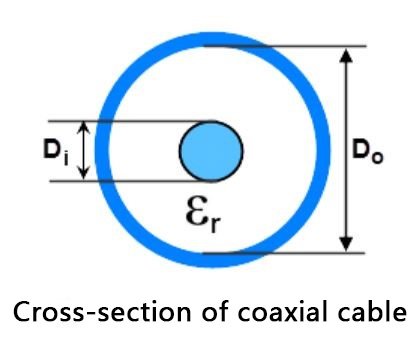How Can a Coaxial Line Calculator Boost Your Design Accuracy

04
May
 Coaxial Cable Assembly
Coaxial Cable Assembly
 Microwave Test Cable
Microwave Test Cable
 Coaxial RF Connector
Coaxial RF Connector
 Coaxial RF Adapter
Coaxial RF Adapter
 Coaxial RF Termination
Coaxial RF Termination
 Coaxial RF Test Probe
Coaxial RF Test Probe
 Coaxial RF Attenuator
Coaxial RF Attenuator
 RF Switches
RF Switches
 Coaxial RF Power Dividers
Coaxial RF Power Dividers
·Precision Tool: Coaxial line calculators help engineers design cables accurately.
·Key Parameters: They compute impedance, loss, and other electrical properties.
·Efficiency Boost: These tools simplify complex calculations, saving time.
·5G Applications: Widely used in modern telecom, like 5G networks.
·User-Friendly: Features like chart aid better design decisions.
A coaxial line calculator is a specialized tool that helps engineers design coaxial cables with high precision. It calculates important factors like impedance and signal loss. These are key for making sure cables work well in communication. By automating complex math, it reduces errors and speeds up the design process.

These calculators allow engineers to input precise measurements, such as conductor sizes and material properties, to get accurate results. Advanced features, such as signal loss calculations, help improve designs. This reduces signal loss, which is important for fast networks.
In 5G networks, coaxial line calculators enable engineers to create cables that support multiple frequency bands, boosting network capacity. This makes them invaluable for modern infrastructure projects, ensuring reliable and efficient connection.
In radio frequency (RF) engineering, achieving precise designs is critical for performance. The coaxial line calculator stands out as an essential tool, enabling engineers to design and optimize coaxial cables with exceptional accuracy. This tool calculates important electrical parameters. It makes sure that cable designs meet the needs of modern applications, like communication and data centers.
Coaxial line calculators are vital for streamlining the design process and enhancing accuracy. They offer several key functionalities that make them necessary for engineers.
The coaxial line calculator helps engineers quickly find important values. These include characteristic impedance, cutoff frequency, capacitance per unit length, and inductance per unit length.

The coaxial line calculator makes these calculations easier. It reduces the chance of human error and saves time compared to doing it by hand. The built-in coaxial line impedance calculator gives accurate impedance values. These values are important for keeping signal quality in high-frequency uses, such as 5G networks.
Designing coaxial cables involves complex number formulas, such as those for capacitance and inductance. The coaxial line calculator makes these calculations easier. It lowers the chance of human error and saves time compared to doing it by hand.
Consistency in measurements is vital for accurate designs. The coaxial line calculator helps with many unit conversions. This ensures that all inputs and outputs match. It makes the design process more reliable.
To make the most of the coaxial line calculator, engineers can use these strategies to improve their designs.
Precision starts with accurate data. Engineers need to enter exact values for certain parameters. – The outer diameter of the inner conductor is one measurement.
– The inner diameter of the outer conductor is another measurement.
– The relative material property of the dielectric is also important. These inputs directly impact the accuracy of the calculations, making careful measurement essential.
Advanced features, such as the coax line loss calculator, enable engineers to compute signal attenuation over distance. This is especially important for applications that need strong signal strength. This includes long-distance data transmission. It allows for designs that reduce loss and improve performance.
The coaxial line calculator often has data view features. These include charts and graphs that show a cable’s performance clearly. These visual tools help engineers make informed decisions and fine-tune parameters for optimal results.
A strong example of the coaxial line calculator’s impact is how it helps design cables. These cables connect 5G base stations to fast data centers.

CommScope’s industry insights show that coaxial cables are essential for 5G infrastructure. They can handle high-frequency signals well. By using the coaxial line calculator to optimize parameters, engineers developed a cable capable of supporting multiple frequency bands simultaneously. This innovation increased network capacity and expanded coverage areas, underscoring the calculator’s role in advancing communication infrastructure.
For businesses in RF engineering, coaxial line calculators offer significant advantages:
·Time Savings: Automation reduces design time, allowing faster project completion.
·Cost Efficiency: Accurate designs minimize material waste and rework.
·Scalability: These tools support complex projects, from small-scale designs to large 5G deployments.
The following table summarizes the key parameters typically computed by a coaxial line calculator, based on industry-standard tools:
Parameter | Unit | Description |
Characteristic Impedance | Ω | Resistance to signal flow, critical for matching. |
Capacitance per Unit Length | pF per meter | Stores electrical charge, affects signal speed. |
Inductance per Unit Length | μH per meter | Induces magnetic fields, impacts signal behavior. |
Resistance per Unit Length | mΩ per meter | Opposes current flow, contributes to signal loss. |
Attenuation (Signal Loss) | dB per meter | Measures signal strength reduction over distance. |
Cutoff Frequency | GHz | Maximum frequency the cable can effectively carry. |
These parameters help engineers design cables for specific needs, like fast data transmission in 5G networks.
The rise of 5G technology has increased the demand for high-performance coaxial cables. As noted in a LinkedIn post, 5G requires more base stations because of higher signal frequencies and greater attenuation. Coaxial line calculators help engineers design cables that mitigate these challenges, ensuring reliable connection across dense network deployments.
The coaxial line calculator is a cornerstone of modern RF engineering, offering unmatched precision and efficiency in coaxial cable design. By providing accurate calculations and simplifying complex processes, it helps engineers create designs that meet high performance standards. It also includes advanced features like impedance and loss calculations.
As technologies like 5G keep improving, tools like the coaxial line calculator will become more important. These tools are essential for businesses that want to stay competitive in the communication industry.
·Coaxial Cable Impedance Calculator – everything RF
·Coaxial Line Calculator – Quaxys
·The RF Path to 5G | CommScope
·Coax Cable in 5G Technology – LinkedIn
 Coaxial Cable Assembly
Coaxial Cable Assembly
 Microwave Test Cable
Microwave Test Cable
 Coaxial RF Connector
Coaxial RF Connector
 Coaxial RF Adapter
Coaxial RF Adapter
 Coaxial RF Termination
Coaxial RF Termination
 Coaxial RF Test Probe
Coaxial RF Test Probe
 Coaxial RF Attenuator
Coaxial RF Attenuator
 RF Switches
RF Switches
 Coaxial RF Power Dividers
Coaxial RF Power Dividers Coaxial Cable Assembly
Coaxial Cable Assembly
 Microwave Test Cable
Microwave Test Cable
 Coaxial RF Connector
Coaxial RF Connector
 Coaxial RF Adapter
Coaxial RF Adapter
 Coaxial RF Termination
Coaxial RF Termination
 Coaxial RF Test Probe
Coaxial RF Test Probe
 Coaxial RF Attenuator
Coaxial RF Attenuator
 RF Switches
RF Switches
 Coaxial RF Power Dividers
Coaxial RF Power DividersNo account yet?
Create an Account